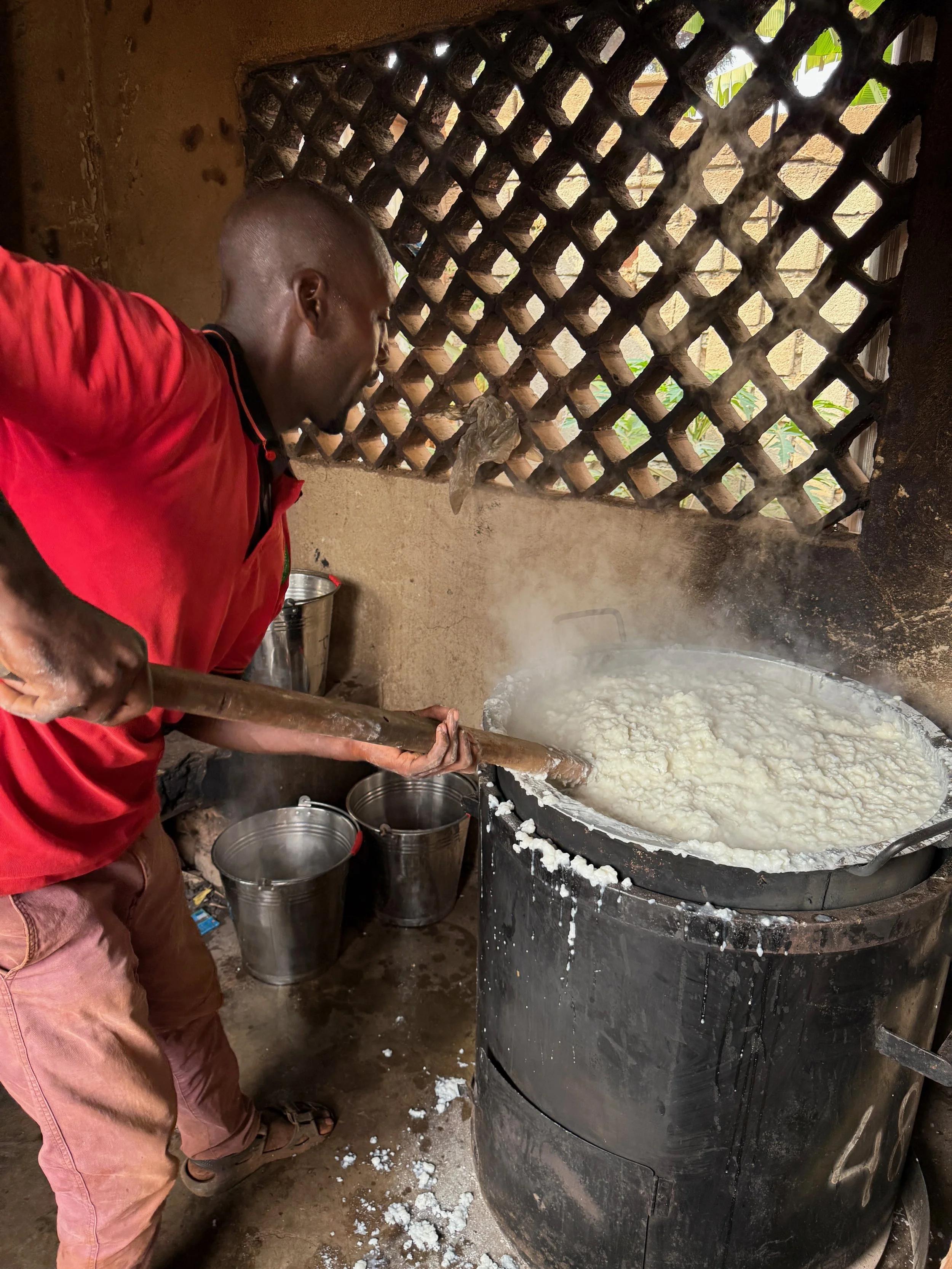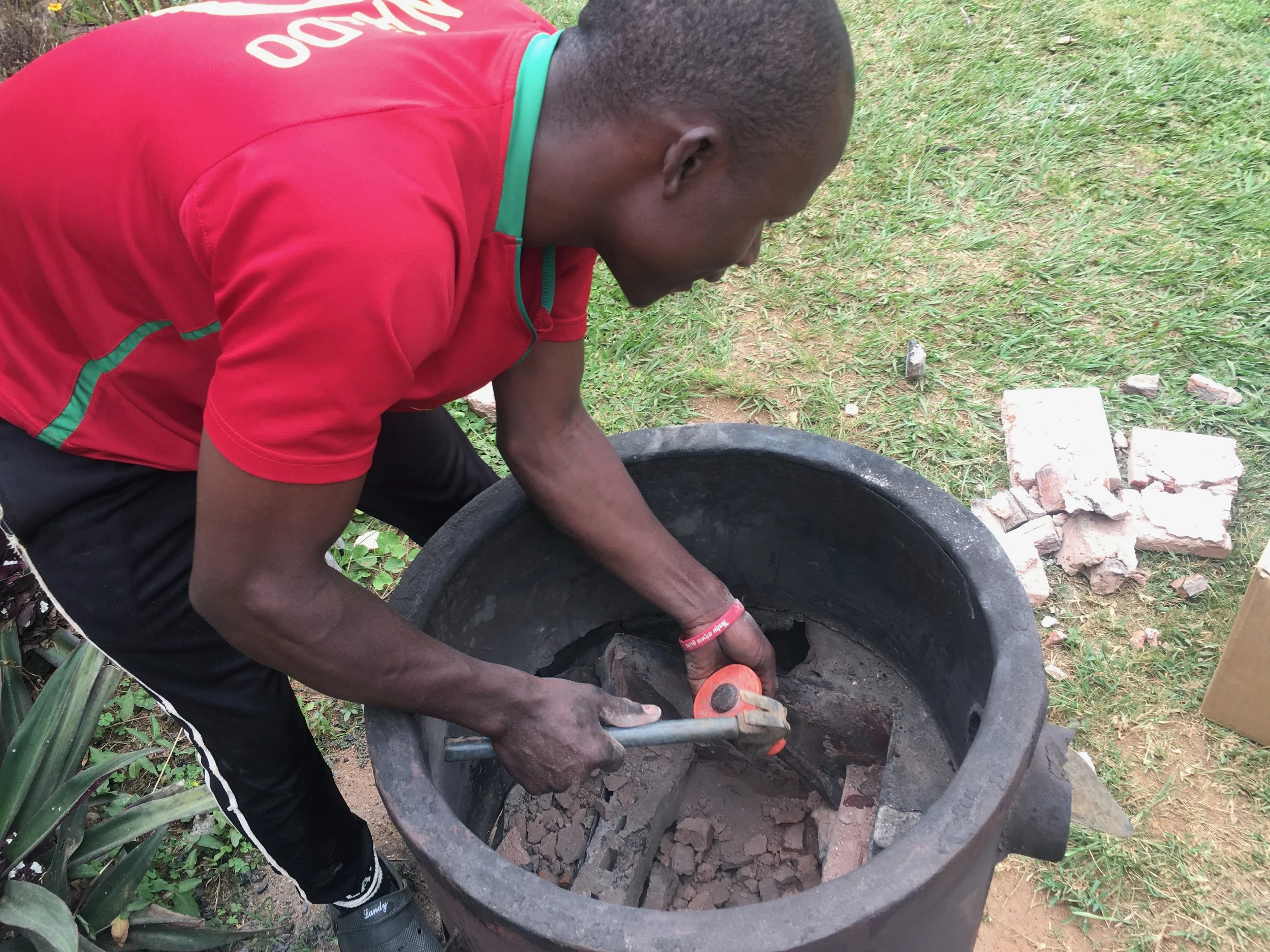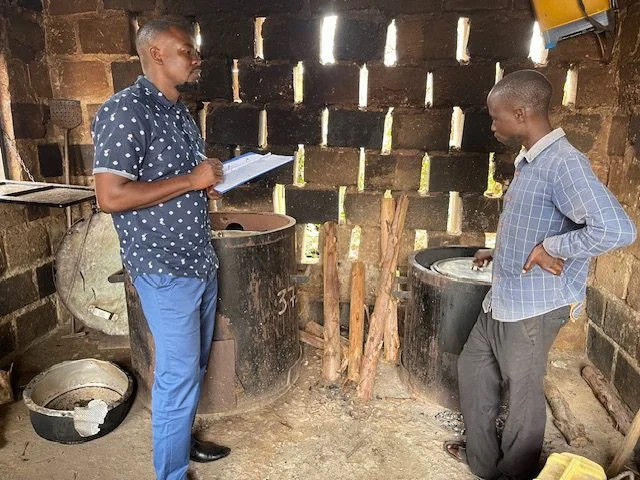We usually find schools storing their firewood inside the kitchen, right behind the institutional improved cook stoves (IICS). Cooks believe that as stoves get hot, the firewood will dry much faster.
Nevertheless keeping firewood inside a kitchen (or any enclosed living space) can be risky for several reasons:
Pests: Firewood often harbors insects, spiders, or even rodents that can spread inside the house.
Mold and fungi: Damp or unseasoned wood can release spores and contribute to poor indoor air quality.
Dust and dirt: Wood sheds bark, dust, and debris that can make a kitchen harder to keep clean.
Safety hazards: Storing too much wood indoors increases the risk of fire if it’s kept too close to stoves or other heat sources.
This is why as part of our training sessions and monitoring visits, we try to implement better practices, such as keeping firewood stored outside in a dry, well-ventilated place (like a wood shed), and only bring in a small amount at a time as needed.








































